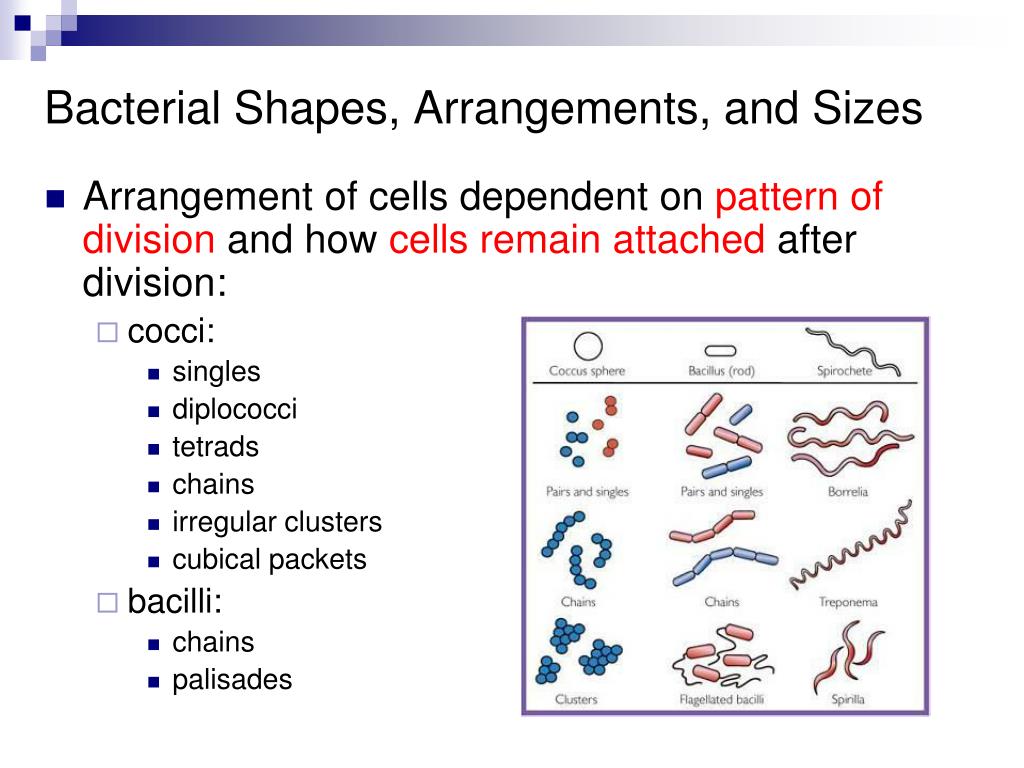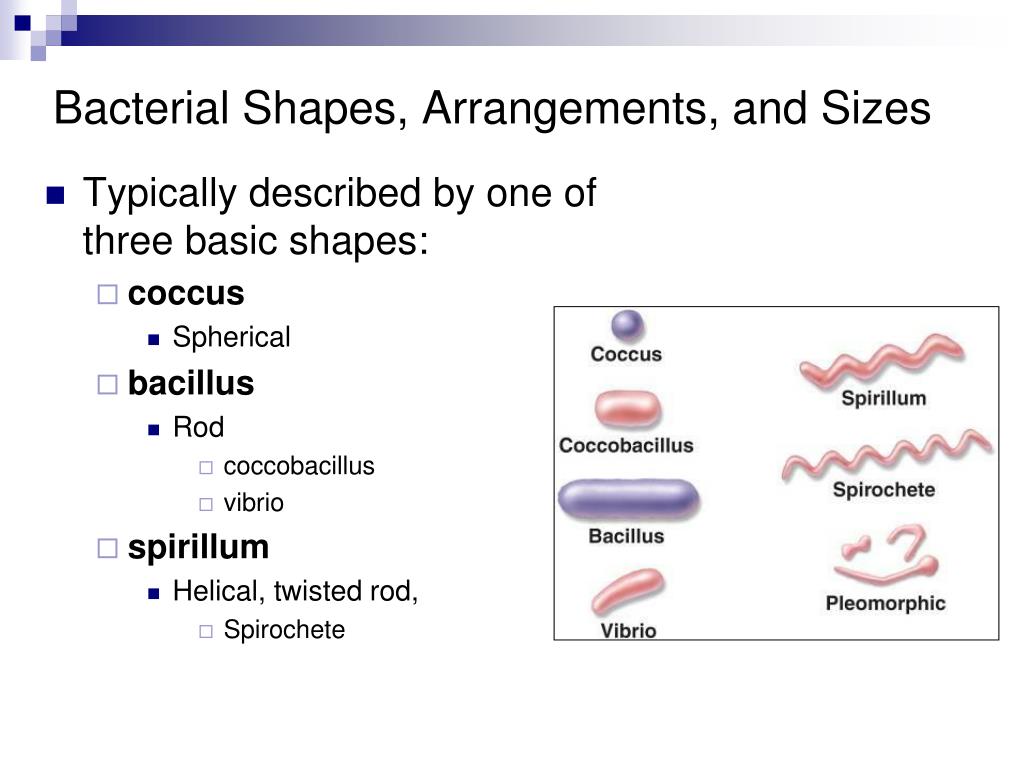
What are the other shapes and arrangements of Bacterial cells?īacteria are unicellular organisms that belong to the prokaryotic group where the organisms lack a few organelles and a true nucleus.What is the quantity of a bacterial cell?.What is the morphology of Bacterial cells?.

#Bacteria shapes and arrangement explained free
As a result, even samples that are free of viable bacteria can still elicit dangerous immune reactions. These molecules are extremely heat-stable, meaning they cannot be fully removed through autoclaving. Endotoxins are pyrogenic, meaning they can elicit a fever response (and sometimes more dangerous reactions, such as sepsis) in humans.Įndotoxins have become a chief concern in the pharmaceutical, biotechnology, and healthcare industries. Endotoxins are lipopolysaccharide molecules found in the bacteria's cell wall. One of the distinguishing characteristics of Gram-negative bacteria is their ability to produce endotoxins. Gram-negative bacteria account for a multitude of conditions, including many foodborne illnesses, cholera, gonorrhea, and urinary tract infections. In addition to spherical or rod-shaped, Gram-negative bacteria can also be spiral-shaped (spirochetes). Like their Gram-positive counterparts, Gram-negative bacteria account for a wide variety of different species. These can lead to multiple types of infections including anthrax, diphtheria, and listeriosis. Rod-shaped bacteria include Bacillus and Listeria.
#Bacteria shapes and arrangement explained skin
Spherical bacteria include Staphylococcus, which causes staph skin infections, and Streptococcus, which can cause a variety of conditions including strep throat, scarlet fever, and pneumonia. There are many different genera of Gram-positive bacteria, and they're generally distinguished by their shape: spherical (cocci) or rod-shaped (bacilli). Gram-positive bacteria will appear violet, while Gram-negative bacteria will appear red. Only the cells which did not retain the violet dye will be stained red.Īt the end, one simply must view the bacteria under a microscope to determine their classification. Since red is lighter than violet, the red dye will not appear in the cells already labeled violet. Thus, Gram-positive bacteria will retain the violet dye, while Gram-negative bacteria will not.įor the final step in the test, a red dye is added to the cells. In Gram-positive bacteria, the dye-iodine complex cannot penetrate the thick peptidoglycan layer, so it remains trapped inside the cell, but in bacteria with a thin peptidoglycan layer, the dye-iodine complex can push through the cell wall, allowing it to be washed away. This is followed by a decolorizing agent, typically acetone or ethyl alcohol, which shrinks the peptidoglycan layer. Then Gram's iodine solution is added, which forms a complex with the dye. First, the bacterial cells are stained using a crystal violet dye. Gram's test involves several steps to classify bacteria into these two categories. In contrast, the peptidoglycan layer of Gram-negative bacteria is much thinner, around 8 nm. Gram-positive bacteria have a very thick peptidoglycan layer, ranging from 20 to 80 nm. The test characterizes bacteria based upon the thickness of the peptidoglycan layer within their cell wall.

The Gram staining test was invented in 1884 by Hans Christian Gram. Many biologists have likely encountered the terms "Gram-positive" and "Gram-negative" bacteria, but what do these terms mean and what are their implications for human health and disease? The Gram Staining Test


 0 kommentar(er)
0 kommentar(er)
